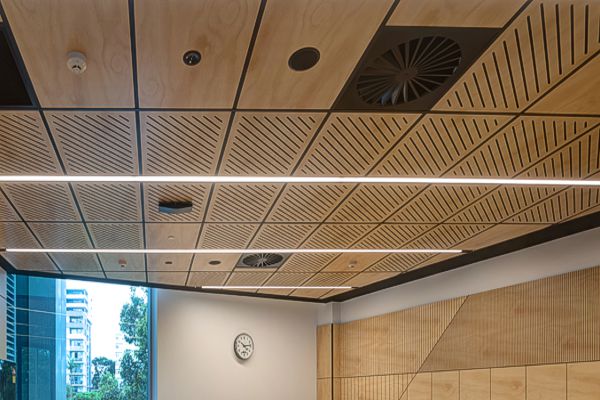Following on from Part 1 of What changes were made to the Green Star Building Standard in 2022, Part 2 explains how Responsible Product Credits work, the building elements under which points are awarded, how a product scores a good Responsible Product Value (RPV), what third party certification systems are recognised as Green Star Certified Buildings Australia, and other Green Star certification requirements that are important to sustainable building.
How do the Responsible Products credits work?
Each responsible product credit, representing a singular building element (e.g. structure, see below), has two criteria that must be met to receive points:
- Firstly, a certain amount of the element (a % calculated by cost) needs to be compliant.
- Compliance is determined by the element meeting or exceeding the RPV score (Responsible Product Value).
The RPV reflects how responsible, healthy, positive, and circular, the product is. The score is currently derived from the initiatives the product complies with, from holistic product certification to environmental product declarations. The current RPV reflects best practices. So over time, this required value will increase.
Two levels of performance can be achieved as follows:
- Credit Achievement: This is achieved if a portion of the products (% amount by cost) in the building element (e.g. wood paneling walls, structure, see below) achieves a good RPV score (e.g. 10).
- Exceptional Performance: This is achieved if even more products (% amount by cost) in the building element achieve a good RPV score, or some of the products (% amount) have a higher RPV score.
What are the building elements under which points are awarded?
There are four building elements which score Responsible Products credits in this way, as follows:
Responsible Structure - The structure is defined as load bearing and stability components of a building, including steel, timber, concrete load bearing elements.
Responsible Envelope - The envelope is defined as the façade, and all façade components such as external shading and insulation, suspended slabs, as well as roofing systems.
Responsible Systems - The systems are defined as the mechanical, hydraulic, transportation and electrical systems present in the building. Lighting, security, and fire systems are also included. Products that make up active systems such as pipes, cables, ducts etc are included. Passive systems such as a façade shading device are not included in this credit.
Responsible Finishes - Internal finishes include flooring, plasterboard, paints, ceilings, partitions, doors, internal windows or similar. Joinery used as part of a wall finish may be counted, e.g., wood paneling walls or fixed shelving/cupboards that make up a partition. Sealants and adhesives used for finishes are also included. Loose furniture is not included.
Supawood panelling systems generally fall under Responsible Finishes. If our aluminium products are used as part of a façade, they will then fall under Responsible Envelope.
How does a product score a good RPV (Responsible Product Value)?
There are five facets of a product that are examined to award points.
These are:
- Responsible - your product’s environmental impacts and content are transparent and meet high sustainability standards.
- Healthy - your product’s ingredients are low or non-toxic and drive valuable social outcomes.
- Positive - your manufacturing process avoids significant. environmental impact, and delivers net zero carbon products.
- Circular - your product is ready for low-carbon production and the circular economy.
- Leadership – this rewards additional achievement for issues critical to the built environment.
As the Green Star certification cannot determine all these facets for every product, the Green Star system has approved third party certification systems, by which one can determine one or more of these facets in order to establish a product score (e.g. 10 or 15 RPV points in the case of structural elements).


Specific compliance standards were reached with Morling College project, Macquarie Park NSW
What third party certification systems are recognised by Green Star or Green Building Council Australia (GBCA)?
Most of the third-party certification systems recognised by Green Star have been around for several years. Each one tends to have a particular focus, but as international standards are becoming more established, they are tending to incorporate most of the facets that Green Star considers important.
The Green Star rating system considers what facets are covered by each certification system, and points are awarded according to the level of the certification system accordingly.
Combinations are allowed where a particular certification level is insufficient by itself.
For a full list of recognised certification systems and the points awarded against each one, refer here: Responsible Products Framework.
Note this list is continuously updated, with the most recent change being made on 28 February 2022.
What other Green Star requirements are important?
The Green Star rating system has additional requirements for product certification schemes for timber, PVC, paints, adhesives, sealants, and engineered wood products.
Note that these schemes may already be included under the RPV points scored above, but in either case they need to be included as follows:
Timber Supplies - If a product has more than 20% of its mass, cost, or volume of timber materials, the product must product must have a valid FSC®, Responsible Timber Supplies, or PEFC/21-31-150 chain of custody.
Note: The majority of Supawood’s timber supplies and timber products are Responsible Wood Supplied/ PEFC sourced.
Paints, adhesives, sealants, carpets, and engineered timber supplies – These products must meet the Minimum Expectations as defined in the credit “Exposure to toxins” in Green Star Certified Buildings Australia.
This includes VOCs and formaldehyde in the case of Supawood products. Note old test standards such as E0, E1, etc for the demonstration of formaldehyde levels are being phased out, and international standards are now promoted instead, based solely on CARB II requirements from USA.
PVC - For PVC products, the manufacturing of the PVC complies with the Vinyl Council of Australia’s Best Practice PVC Guidelines.
The Green Building Council of Australia and Green Star have shown us that sustainable building is both possible and can be economical in Australia.
The GBCA recognises that sustainability is a community initiative and that local needs and efforts need to be included. This has been done by including local as well as international third-party certification schemes.
In view of preventing climate change, it is important we take sustainable construction seriously. Consider these facts:
- Buildings account for ~40% of energy related global carbon emissions.
- About 25% of all building emissions are related to material production and construction.
- Buildings are responsible for 50% of global material use
- 4bn tonnes of materials consumed annually
It is incumbent on all of us to do our best towards building a better future for us and our children.
If you would like a FREE short CPD training session on sustainable building practices or need more up-to-date information about changes to the Green Star Rating System, please contact Supawood to schedule a consultation call.
